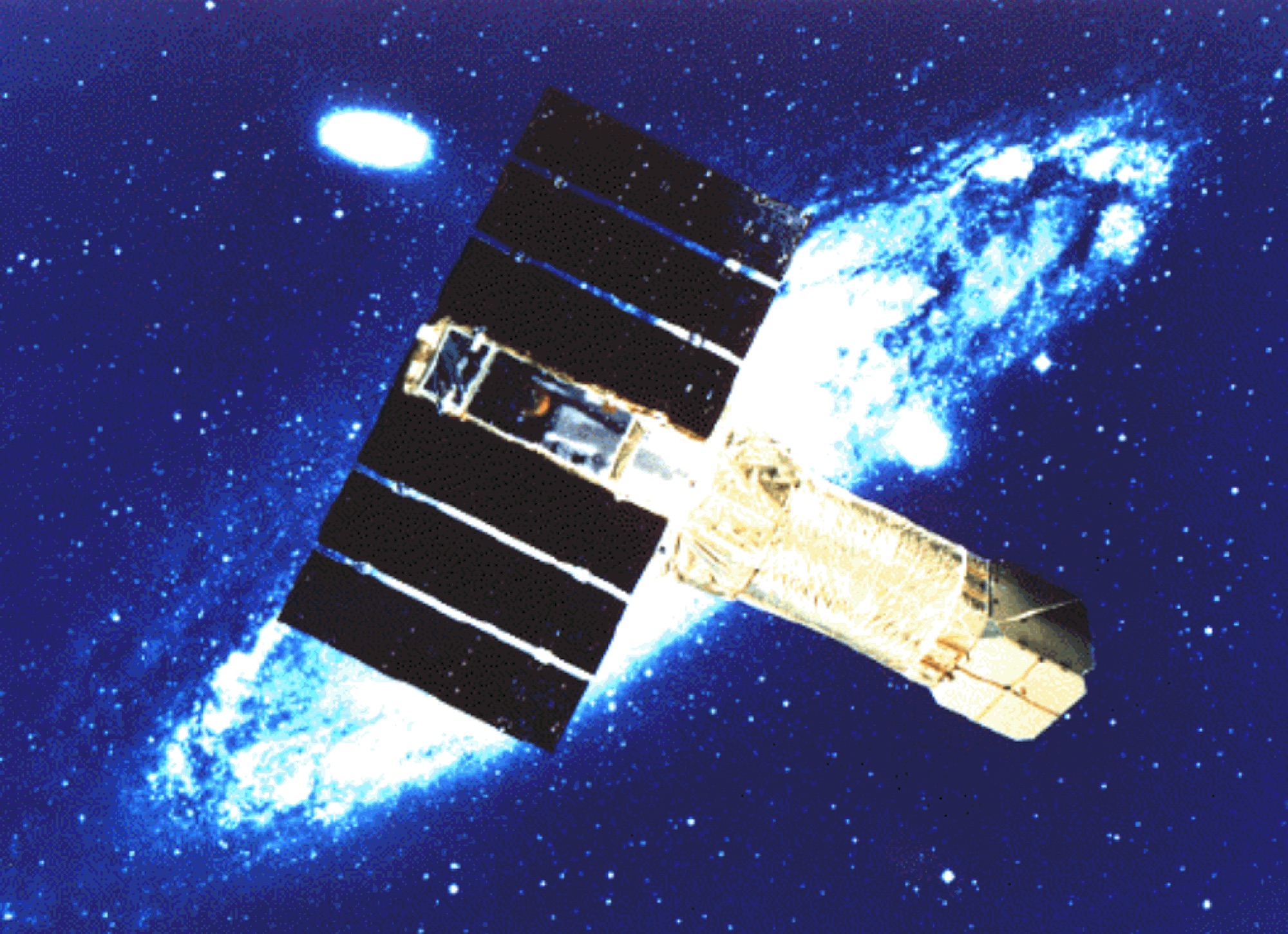So You Want Science? Just ASCA!

Illustration of ASCA in space. (Credit: ISAS and NASA/GSFC)
The Advanced Satellite for Cosmology and Astrophysics, or ASCA for short, was launched by Institute of Space and Astronautical Sciences (ISAS), Japan, on February 20, 1993. The mission operated successfully for over seven years until attitude control was lost on July 14, 2000 during a geomagnetic storm. After that, no scientific observations were performed. ASCA reentered the atmosphere on March 2, 2001 after more than 8 years in orbit.
While it was collecting science data, ASCA presented scientists with data of extraordinary spectral resolution, which resulted in scientific advances in the areas of accreting binaries, supernovae, active galactic nuclei, and clusters of galaxies, among other topics. In many ways, ASCA opened up the era of X-ray spectroscopy – acting as a pathfinder for future missions such as XMM, Chandra X-ray Observatory, and Suzaku.
This exhibit highlights some of those exciting discoveries. ASCA's abilities complemented two other X-ray satellites that overlapped with ASCA's operations - ROSAT, which was doing X-ray imaging, and RXTE, whose strength was X-ray timing studies. Together, these missions gave us advances on all fronts in understanding the high-energy universe.
Learn more about ASCA, the satellite and its science, by following the links below.
- The ASCA Satellite and Experiments
- ASCA is a model of international collaboration
- Accreting binaries
- SN 1006 – a supernova source of cosmic rays
- Accretion disks in active galactic nuclei
- Abundances of elements in clusters of galaxies
Published: February 1998
Text Reviewed: September 2018


